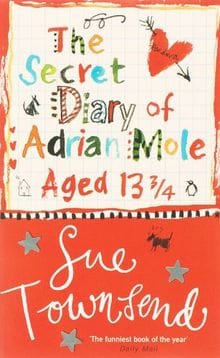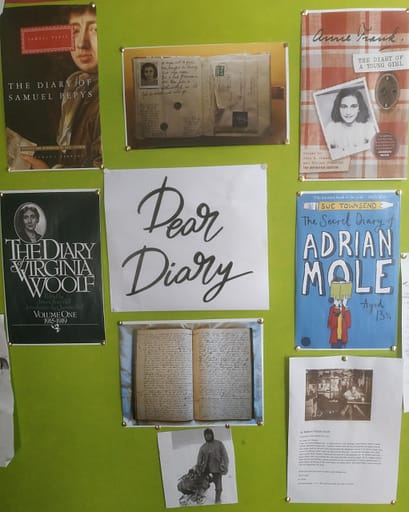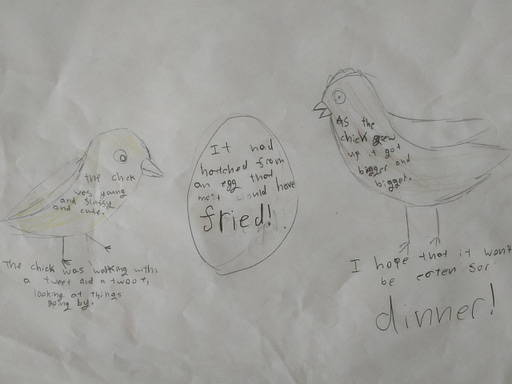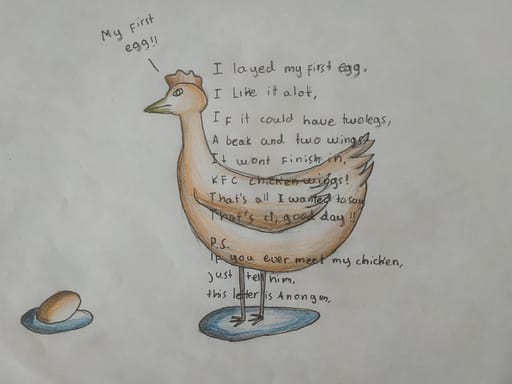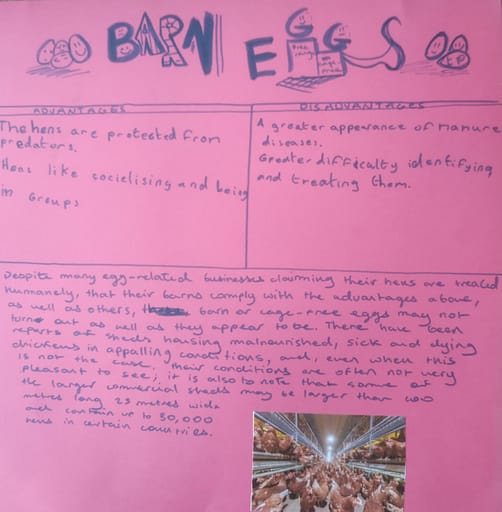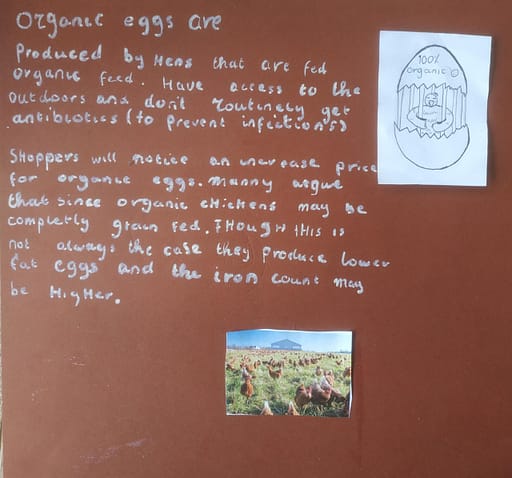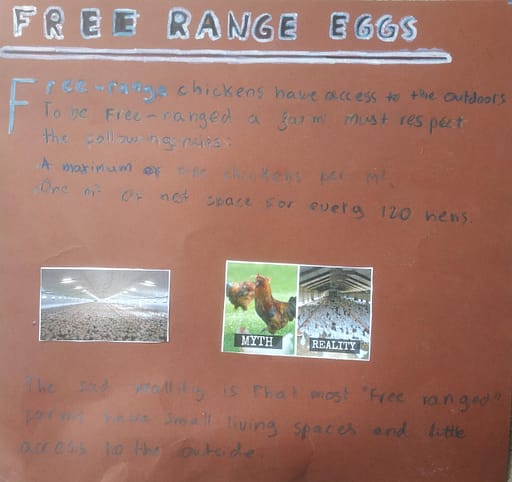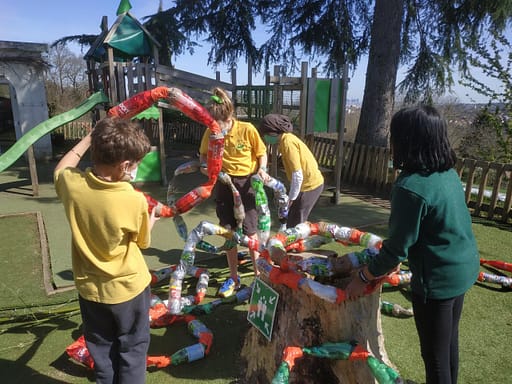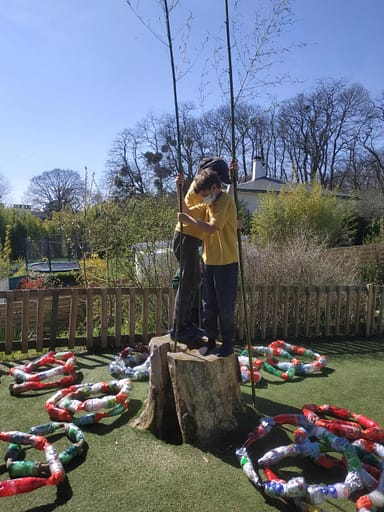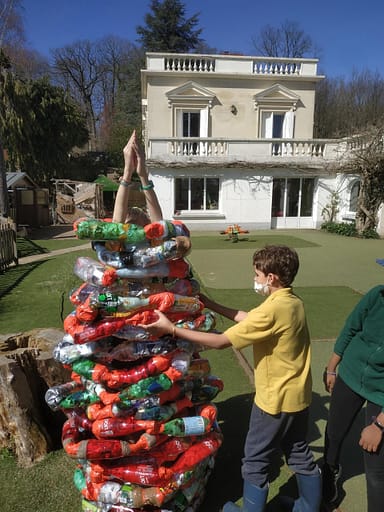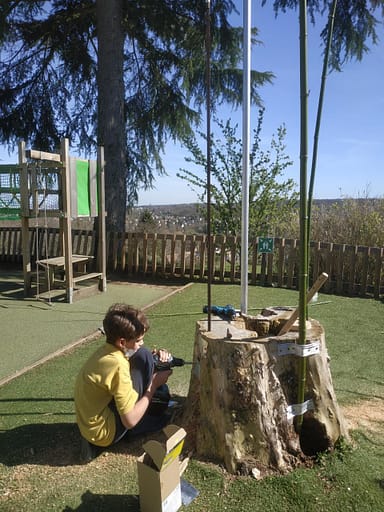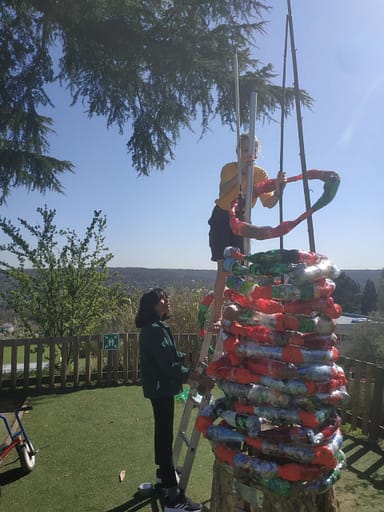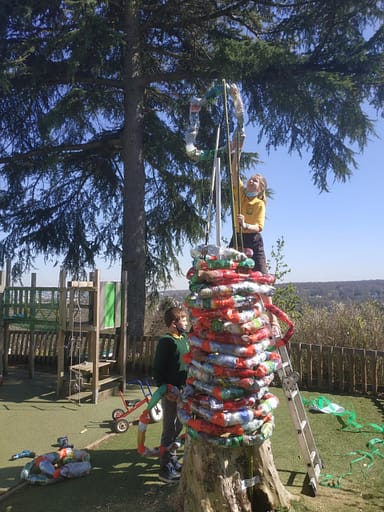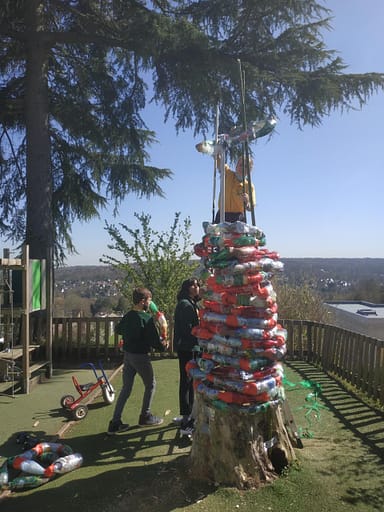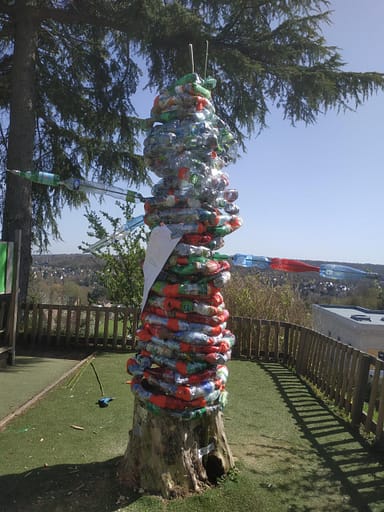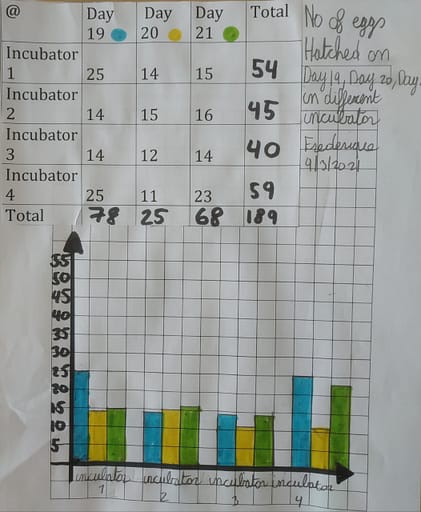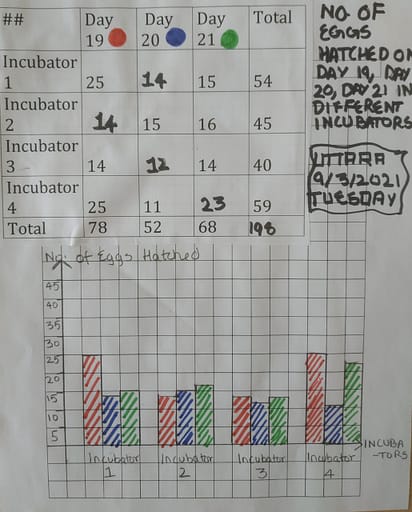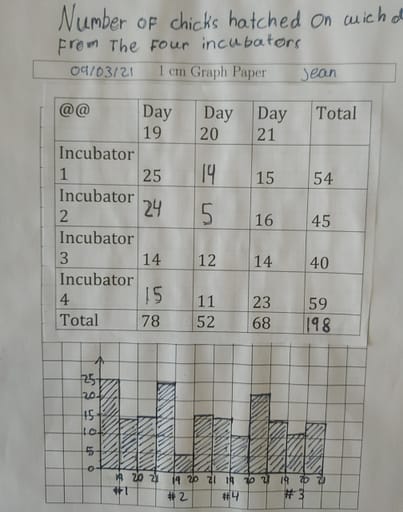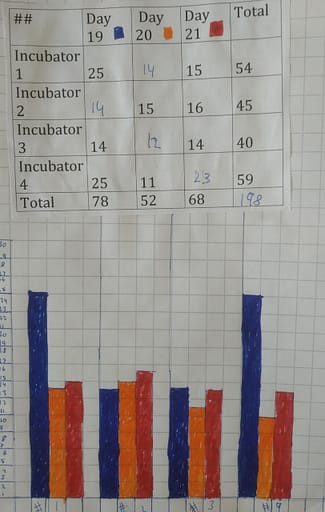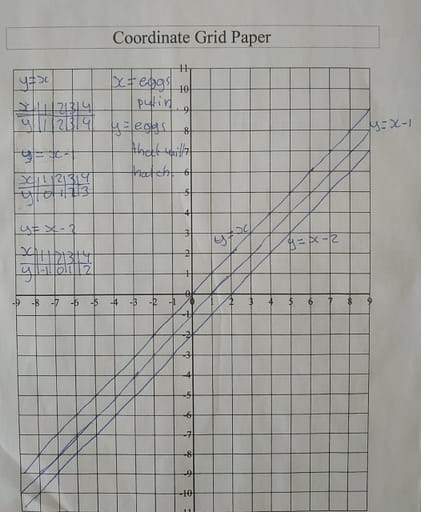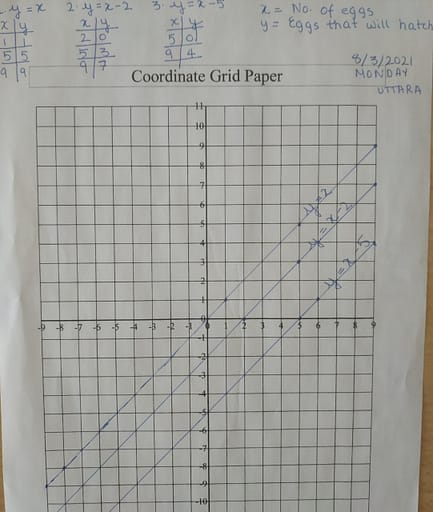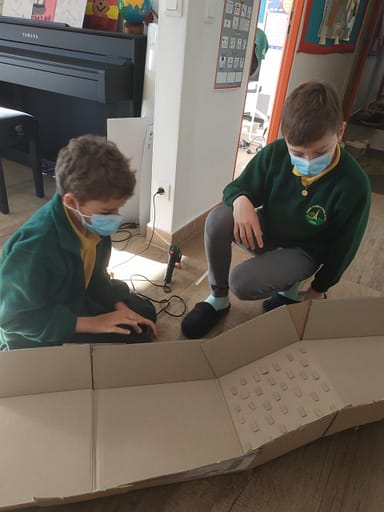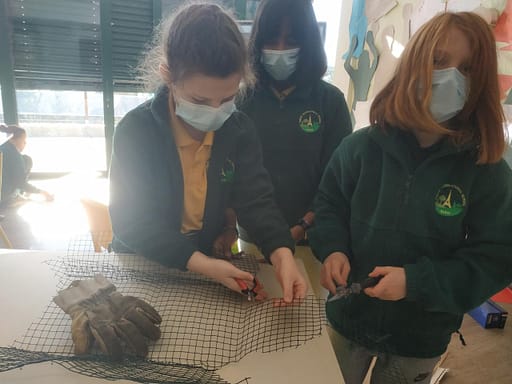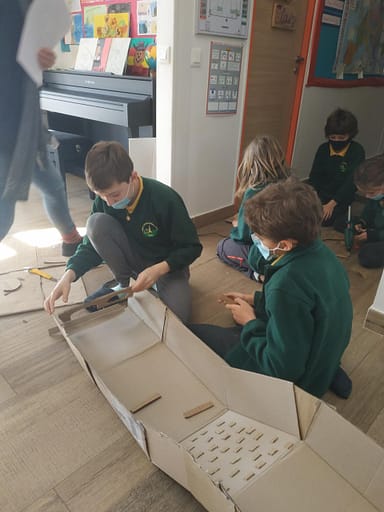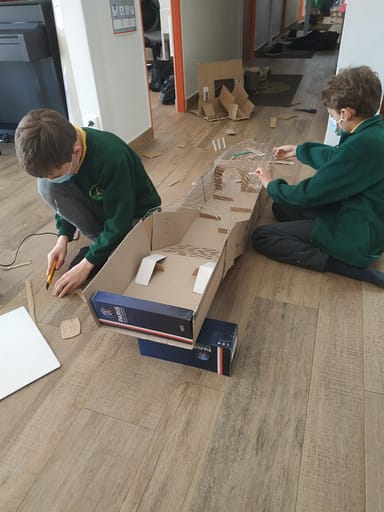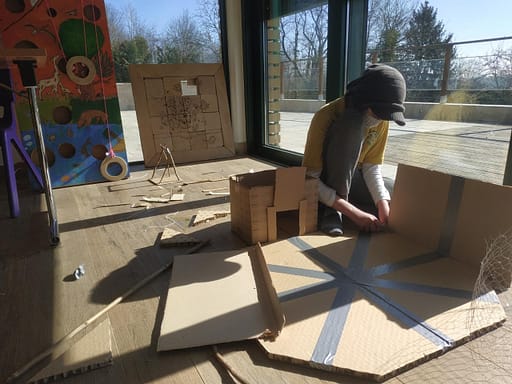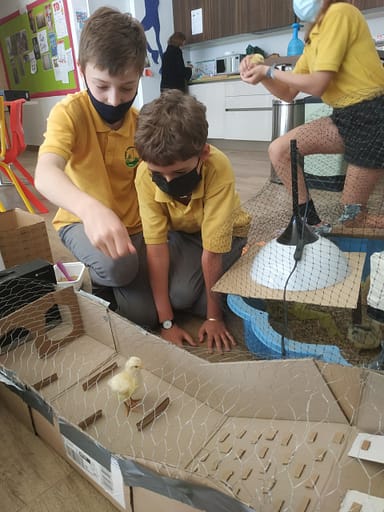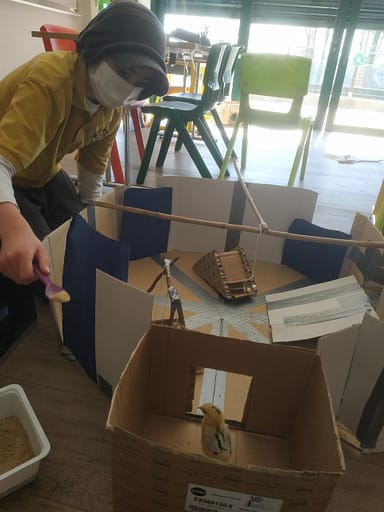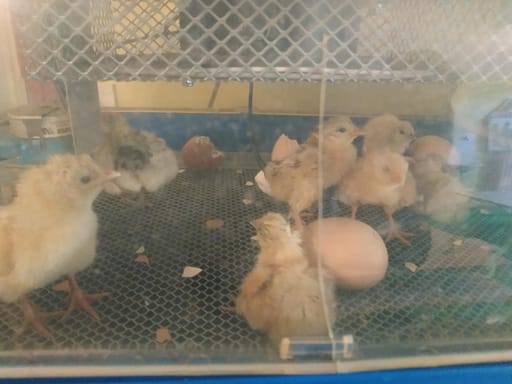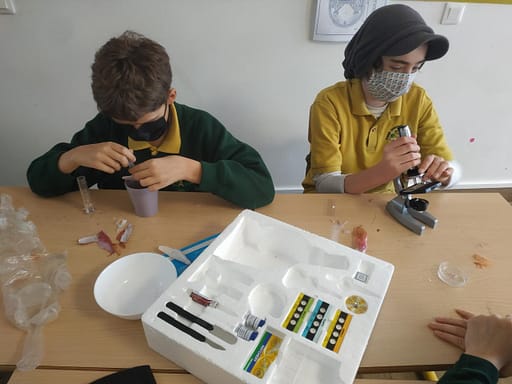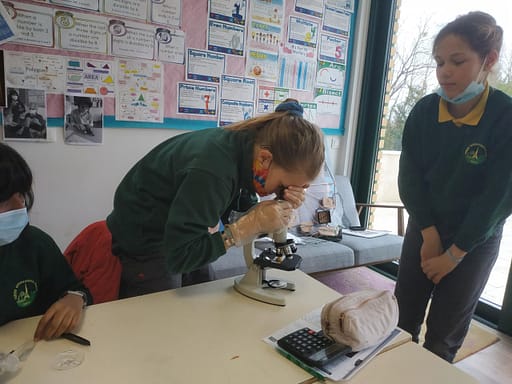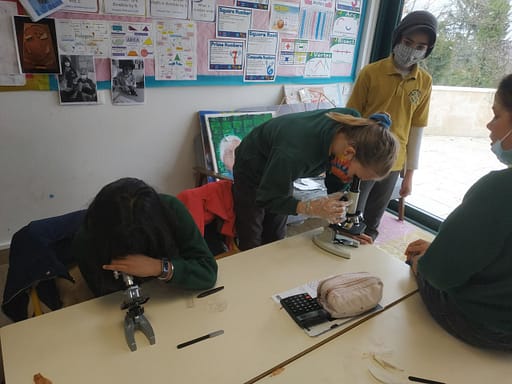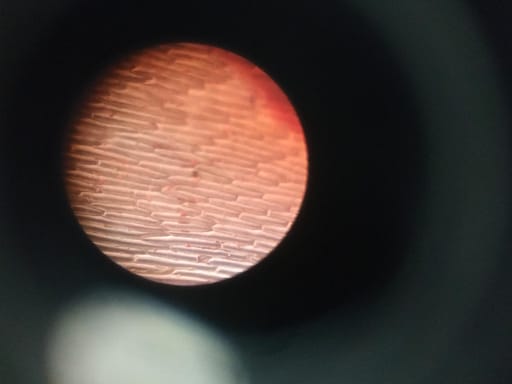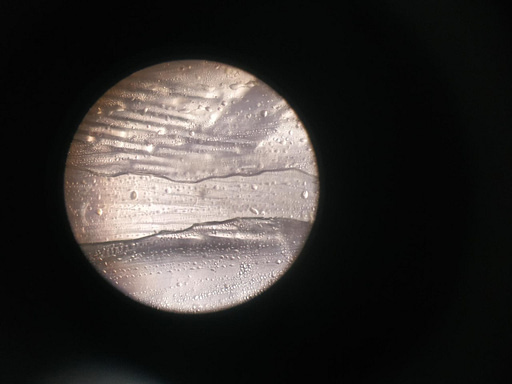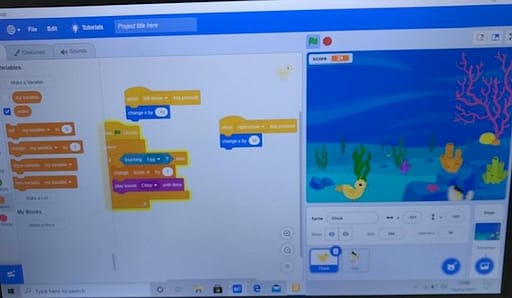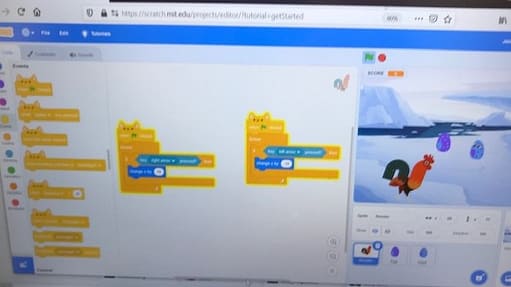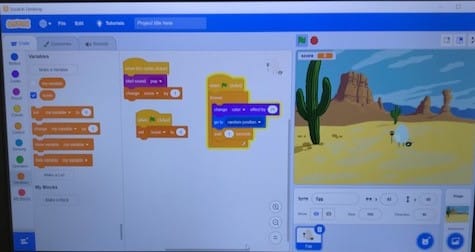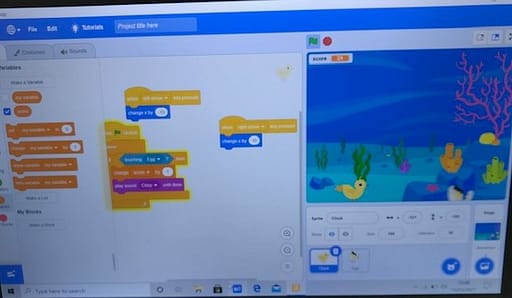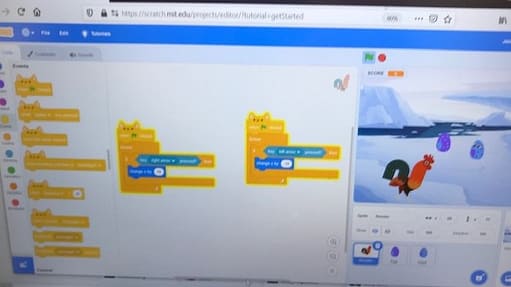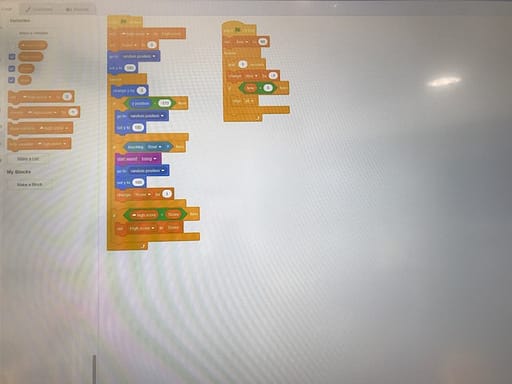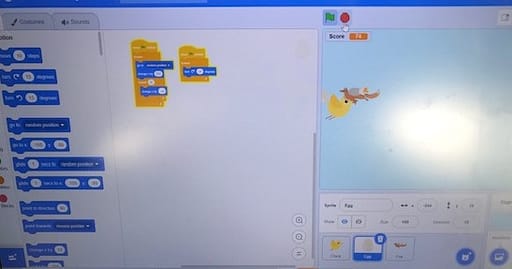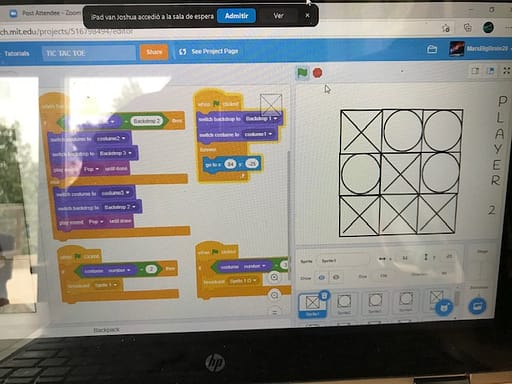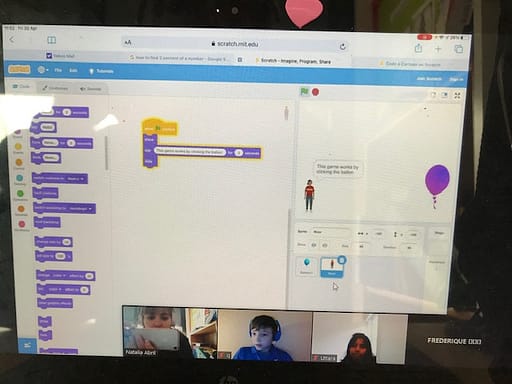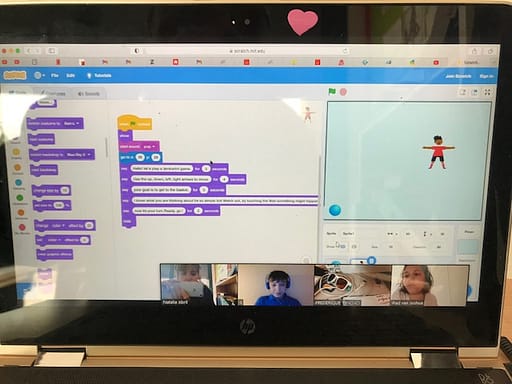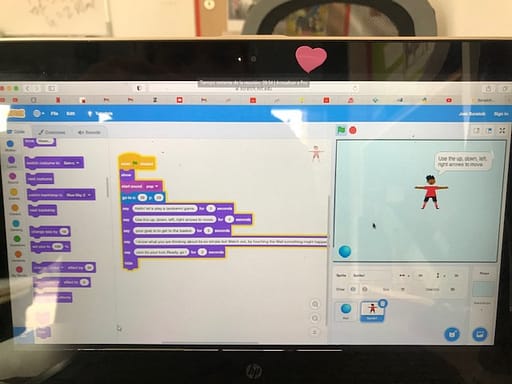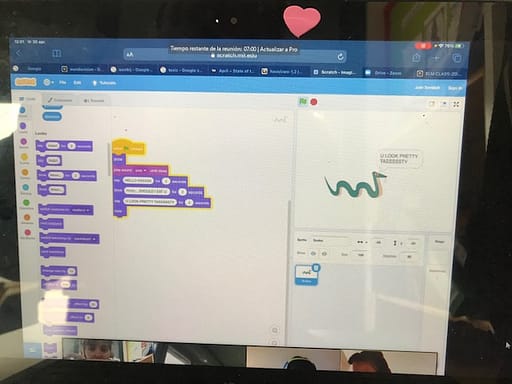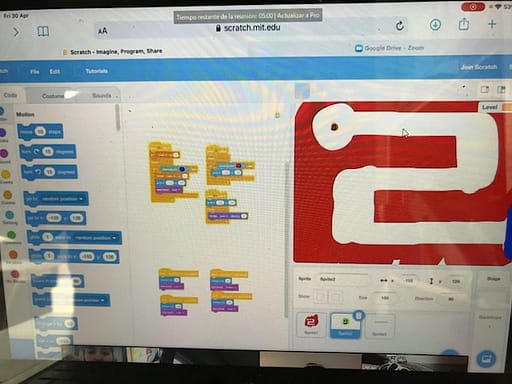Literacy
The Spring Term saw Elms delving into the diary of anxious teenager Adrian Mole as he struggled to cope with outbreaks of spots and his parents’ marital troubles.
Adrian Mole’s Parents by Uttara Nair
Pauline and George Mole
Adrian Mole’s parents are quite careless and irresponsible. They don’t seem to care about Adrian Mole. They are also alcoholics and always keep on smoking. I guess that is one of the main reasons why Adrian Mole is un poco loco. He tries to get their attention but they are too busy in their own gloomy life to take any interest in their child’s life. They are so careless that they didn’t even realize that Adrian was reading magazines that are not age appropriate like the Big And Bouncy. Even after they found out about the magazines all they cared about was the phone bill that he had hidden and not about the inappropriate articles he was reading. They were also so busy doing nothing that they didn’t even name the dog!! His mom had moved in with Mr. Lucas but after some months she came back to Adrian’s dad. I actually feel sad that Adrian has such negligent parents and no adult to look up to.
Adrian’s friend Nigel by Liam Coetzee
Nigel’s role in the story is as Adrian’s best friend. They both go to the same school. Nigel has a very modern large house with an amazing room. It has everything, a stereo, spotlights over his bed, an electric guitar and a colour television! Adrian goes on Nigel’s racing bike. It has a water bottle, a milometer, a speedometer, a yellow saddle and very thin racing wheels. It is the coolest bike ever and Nigel does not even truly appreciate it. Nigel and Adrian do lots of things together. They like to watch movies and go out to buy things. They both unfortunately also like the same girl, Pandora. Pandora has lovely hair and becomes Nigel’s girlfriend. This makes Adrian very mad with his friend Nigel. Pandora is Adrian’s lost love!
Adrian Mole’s Character by Lila Monnet
Adrian says he is an intellectual and he dislikes the dog. He is in love with a girl named Pandora and has a bad relationship with his parents.
Some enjoyed his naïve accounts of the goings-on at home and at school while others were less appreciative. Nevertheless, they got to know the Leicester youngster who was Britain’s most celebrated teenager before the arrival of Harry Potter.
The would-be intellectual makes numerous references to literature throughout his diary, only to reveal his ignorance. “I read a bit of Pride and Prejudice, but it was very old-fashioned. I think Jane Austen should write something a bit more modern.”
Elm, like the rest of the school, were captivated by the incubating eggs and then by the chicks that emerged from them. They produced poems and pictures and built runs with activities to keep them entertained. They also researched the murky world of egg production, the various methods used by farmers and the terminology that we encounter in the shops: battery (cage), free-range, barn, organic – what do all these terms mean?
Elm discovered that the reality of ‘barn’ and ‘free-range’ egg production bears very little resemblance to the images of rustic farmsteads and grassy meadows that they conjure up.
“E-BAOBAB ” – Someone’s rubbish, our treasure
There is a lot of Mathematics in growing trees, especially if they are made out of plastic! On our “eco-friendly / e-baobab” mission we estimated, calculated, measured and looked at the different possible solutions for “growing” our tree.
The key to our e-baobab tree is the simple concept of ‘No Rubbish, Only Resources’.
Our E-Baobab project challenges the modern-day single-use culture, ‘Buy today and throw away tomorrow’. It teaches students to see value and potential in everyday objects. It also teaches them to build and construct, and to think about how things work. It involves project-based learning and the construction of useful or fun devices using recycled materials the children have helped to source themselves. These projects not only allow the children to use their re-cycling imaginations, they teach them about construction, carpentry, mechanics and engineering. The challenge of constructing something from old or used materials is motivating because it has a bigger purpose behind it. As the students become aware of the problems, they become engaged in the solutions, as they learn that something used need not be useless.
“Pensez au tri! Jeter vos détritus à la poubelle!” Instructions for recycling are so misleading that we thought we had to do something about it.
Our message is that it is never too late to start to make changes, and that together each one of us can help to change the world.
We like to think that we are putting the ‘éco’ into ‘école’. Thank you to all the FISP families for their amazing input during this project and a big round of applause to Elms for their dedication and hard work.
History
The theme was Generation Games and had us reflecting on how societies around the world treat the elderly and what our attitudes are to old people. Elm were overwhelmingly appreciative of the older people in their lives, particularly their grandparents.
To encourage recognition of older people’s lives and respect for their experiences, often things that are totally outside of our own, we had a first-hand account of what it was like to be in Berlin when the city was divided by the Wall. Unsmiling soldiers with machine guns at the checkpoints, searching the car for smuggled goods on the way in and smuggled people on the way out; shabbily dressed people and poorly stocked shops on the Eastern side, people afraid to be seen talking to foreigners.
The children were rightly shocked; how could a wall have been built to divide a city as everyone stood by and watched? They learned how it was constructed, why it was built (to keep people in rather than keep people out) and of the brave men and women who escaped and those who didn’t.
They learned how it came down in 1989, more by accident than design. They enjoyed the anecdote about people handing the East Germans bananas, a highly prized commodity that was all but impossible to come by on the Eastern side of the wall.
Pupil’s wrote diary entries in the persona of someone living in the East when the wall came down.
Geography
Birds are returning from over-wintering in warmer climes, and we decided to investigate their annual journeys around the world, many of which are extraordinary feats of endurance.
We discovered that bird migration is fraught with dangers and that many birds who set off do not return. When we looked into the list of dangers migrating birds face, we discovered, as usual, that humans play a major role, through light pollution from cities, glass in high rise buildings, wind turbines and destruction of habitat.
Pupils chose a bird and tracked its migratory path on a map, noting the countries traversed. It is incredible to think that the swallows arriving in France have been on an epic journey, on routes that might pass through the Sahara Desert or along the west coast of Africa or the Nile Valley.
Mathematics
We worked on recording, describing and analysing the frequency of outcomes of simple probability experiments involving randomness, fairness, equally and unequally likely outcomes. Elms constructed and interpreted various data tables, charts, and diagrams, including frequency tables, bar charts, pie charts, pictograms, line graphs, and scatter graphs (correlation). Elms can clearly distinguish between positive and negative correlation, identify if it is strong, moderate or weak and understand that all outliers are not taken into consideration while drawing the line of the best fit. We then dived deeper into construction of pie charts and calculated desirable percentage and number of degrees for the specific group of data. We also worked on calculating the ratio and proportion and then solved various problems that involved these.
Egg project: Mathematics ( Statistics)
Linked to our “Egg project”, we created our own hypothetical and real problems based on our incubator and then constructed various graphs to represent our findings. In algebra, we closely looked into linear equations and then learnt how they could be represented geometrically. We substituted random values in these equations which subsequently helped us draw: y=x, y=x-1, y=x-2 and what they represent. We were quite lucky with our little chicks as nearly all of them hatched. In reality, our final linear equation was y=x-3, where x (x=13) was the number of the eggs in the incubator and 3 the number of chicks that did not hatch.
Science –“Egg project”
How to train your chicken in 30 days?
Elms created different training facilities that enabled them to observe, stimulate and love their new fluffy friends even more.
Science / Biology
We started this unit by using microscopes to study cell structure and their functions and then compared the main parts of the animal and plant cells. We closely looked at the chick embryo development and then followed them on their 21 day journey.
Elms compared the respiratory systems of humans and chickens and then pinpointed the similarities and differences. We were intrigued by the complexity of the chickens’ respiratory system where they get two doses of oxygen for the price of one breath.
We discovered how a spirometer is used to measure the volume of air inhaled and exhaled. Elms then discussed Tidal, Residual, Inspiratory and Expiratory Reserve Volumes and how they differ in men and women and the altitude that they live on. We also learnt about the similarities and differences between aerobic and anaerobic respiration and how they produce energy. We used a virtual model of a chicken and followed “that egg in the making” and were egg-static to discover the main stages of egg development (fertile and infertile).
ICT
ICT lessons have provided pupils with the principles of technology information and computation, which have been applied through programming. Computing enables pupils to become digitally literate; in other words, they are able to express themselves and develop their ideas through information and communication technology as well as being active participants in a digital world.
Elm class have started developing coding and programming skills to create their own video games by using “Scratch”, a programming language that develops mental skills.
They have made several kinds of video games around the egg-exciting IPC theme of this fourth term, “ Eggs”.
First, they started exploring and discovering the Scratch world. Little by little, they began to develop their own ideas and conclusions in order to make specific actions. For example, to move the sprite up and down, they had to use the Y-axis; to move the character right and left the X-axis had to be used. As can be seen, computing has deep links with mathematics, which allows pupils to apply their maths knowledge.
Once they had acquired the basic principles, Elm class went deeper, trying to improve and make their video games more complex, adding score bars, special variables to double their score, obstacles, background music, sound and pop-up messages.
Finally, they ended the term with a creative project called “Video game week” during which they showcased their capability, creativity and knowledge of computer science, digital media and information technology.
The aim of this week was to share their games and to explain how they were made. Each pupil presented their game and explained the code process.
The presentations ended with a Q&A session.
French/French IMYC
Spanish
VALENCIA, BEAUTIFUL CITY
This term we focused on sightseeing: What kind of sights and attractions can we find in a city or town?
I presented my home city of Valencia. We did a little research and we found loads of interesting facts about this beautiful Spanish city: Plaza de toros, Miguelete, ciudad de las Artes y de las Ciencias, the old part and the modern part.
While learning about these sights and buildings, they practised using adjectives, such as: Viejo, tradicional, nuevo, moderno, tranquilo, popular,…
WE TRAVELLED AROUND SPAIN!!!
I gathered pictures of some emblematic cities of Spain: Barcelona, Madrid, Galicia, Salamanca, Sevilla, Mallorca, … These photographs were placed around the classroom and pupils had to travel around and guess which city they were visiting. The task was the following: Guess the name of the city and its location and describe it using at least five adjectives. They collected all the information in their notebooks as though putting together a guidebook. Once they had all travelled around the cities, they shared their information.
WE ARE GOING ON HOLIDAY!!! WHAT DO WE NEED?
We reflected on the different places that you can visit when on holiday: the mountains, beaches, forests, … Then we brain-stormed about which things to pack for that “excursion”. Pupils came up with lots of ideas, for which they learned the Spanish words, thus broadening their vocabulary.
QUICK ROUND OF SHORT QUESTIONS.
At the beginning and end of each class, we always spend a few minutes on ‘short questions’. I pose them questions that they have to reply to, briefly and clearly; for example: ¿Qué tiempo hace hoy?, ¿Qué has hecho hoy?, ¿Cuál es tu serie/película/comida favorita? Afterwards, pupils note down all new vocabulary.

